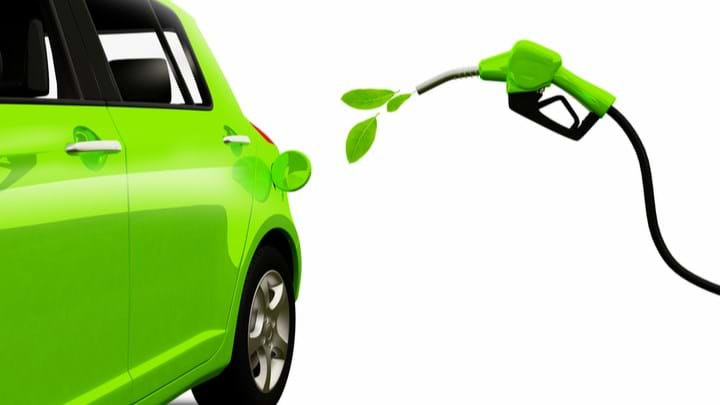Novel process for cost-effective biofuel recovery

RESEARCHERS at Imperial College London, UK have developed a cost-effective and energy-efficient process for extracting biofuels that could make them a viable alternative to fossil fuels for transport.
Biofuels, made from renewable organic matter, offer an alternative to electric vehicles in replacing fossil fuels in aviation and transport industries. However, though they have been commercialised for transport and power generation, biofuels have yet to be used on a large scale due to their high cost. The high cost is partly due to the energy-intensive and low-yield methods used for extracting fuel-grade biobutanol from biomass fermentation.
Collaborating with BP, researchers in Imperial’s Livingston Group developed a membrane-based extraction method that reduces energy requirements by 25% and produces ten times more biofuel with more than 99.5% purity.
In their research, the scientists focussed on identifying a suitable extractant and membrane material with desirable affinity and physiochemical properties. The researchers developed a spray-coated thin-film composite membrane for extraction. It was selected for its intermediate affinity between the fermentation broth (water) and the selected extractant to maintain an interface between the two liquids. An extractant is a solvent used to extract a solute from a solution. The chosen membrane blocks transport of the extractant and water, while allowing biofuel to travel through it.
Researchers chose 2-ethyl-hexanol (2EH) as the extractant based on several attractive properties including water-immiscibility, high boiling point, low viscosity, and high partition coefficient for the target product. A high partition coefficient of extractant increases the effective driving force of membrane-based extraction and improves productivity. Additionally, 2EH is inexpensive and readily available.
The membrane separates the fermentation broth from the extractant 2EH, which is highly selective but toxic to microorganisms. Alcohol product can be extracted through the membrane keeping the alcohol concentration low at the fermentation broth, preventing toxicity and promoting biofuel production. Furthermore, the membrane enables continuous production leading to increased productivity compared to conventional techniques.
For production, the fermentation broth and extractant were counter-currently circulated at either side of the membrane unit using gear pumps at 1 L/min, explained Jihoon Kim, Research Associate at Imperial. Both membranes were maintained at 37°C with vigorous stirring.
Energy consumption for butanol production was 3.9 MJ/kg, which is substantially less than conventional membrane-based processes that have energy consumption ranging from 17–29.4MJ/kg. Recovery rate is improved ten-fold from conventional methods, achieving a rate of 55 g/m2/h without comprising selectivity. However, this compares recovery rates of extractions which result in different purity of the final product. This is why energy consumption for biofuel production was investigated to compare fairly different systems, said Kim.
According to Kim, the team at Imperial is currently working to develop this technology further, including by scaling up membrane fabrication and immobilising microorganisms. Kim explained that the research at Imperial was done at lab-scale and the maximum size of the current membrane is A4. He said large-scale membrane needs verifying.
Additionally, he noted that microorganisms can decrease extraction rate by forming a biofilm on the membrane and immobilised membranes should therefore be used in the fermentation broth. The researchers are also working to reduce the thin-film layer to improve extraction rate and are investigating the effects of temperature on the extractant.
The Livingston Group aims to complete a pilot or large-scale study of its work to validate its findings and to further refine its process by doing membrane modulation and operating continuous recovery with immobilised microorganisms.
In addition to biofuel production, the system developed could be applied to other challenging separations that cannot be achieved using current thermal or pressure-driven processes, selectively targeting materials based on affinity of partitioning difference, said Kim.
He added: “The process can keep reactants, catalysts, and microorganisms at one side of a membrane […] the product can be recovered on the other side, resulting in promoting production rate. This concept has been proposed for several applications such as separating multi-ring aromatic hydrocarbons, crude reaction products, and others in patents and the literature since the 1970s.”
Andrew Livingston, Professor of Chemical Engineering at Imperial and Head of the Group, explained to a reporter at Imperial that because of their cost, “biofuels are usually combined with petrol or diesel to make them ‘go further’”.
“Our new technology could help to drive down the cost of biofuels so that they eventually replace fossil fuels in transport and aviation – a much happier situation for the environment and one we are all working towards.”
Recent Editions
Catch up on the latest news, views and jobs from The Chemical Engineer. Below are the four latest issues. View a wider selection of the archive from within the Magazine section of this site.




